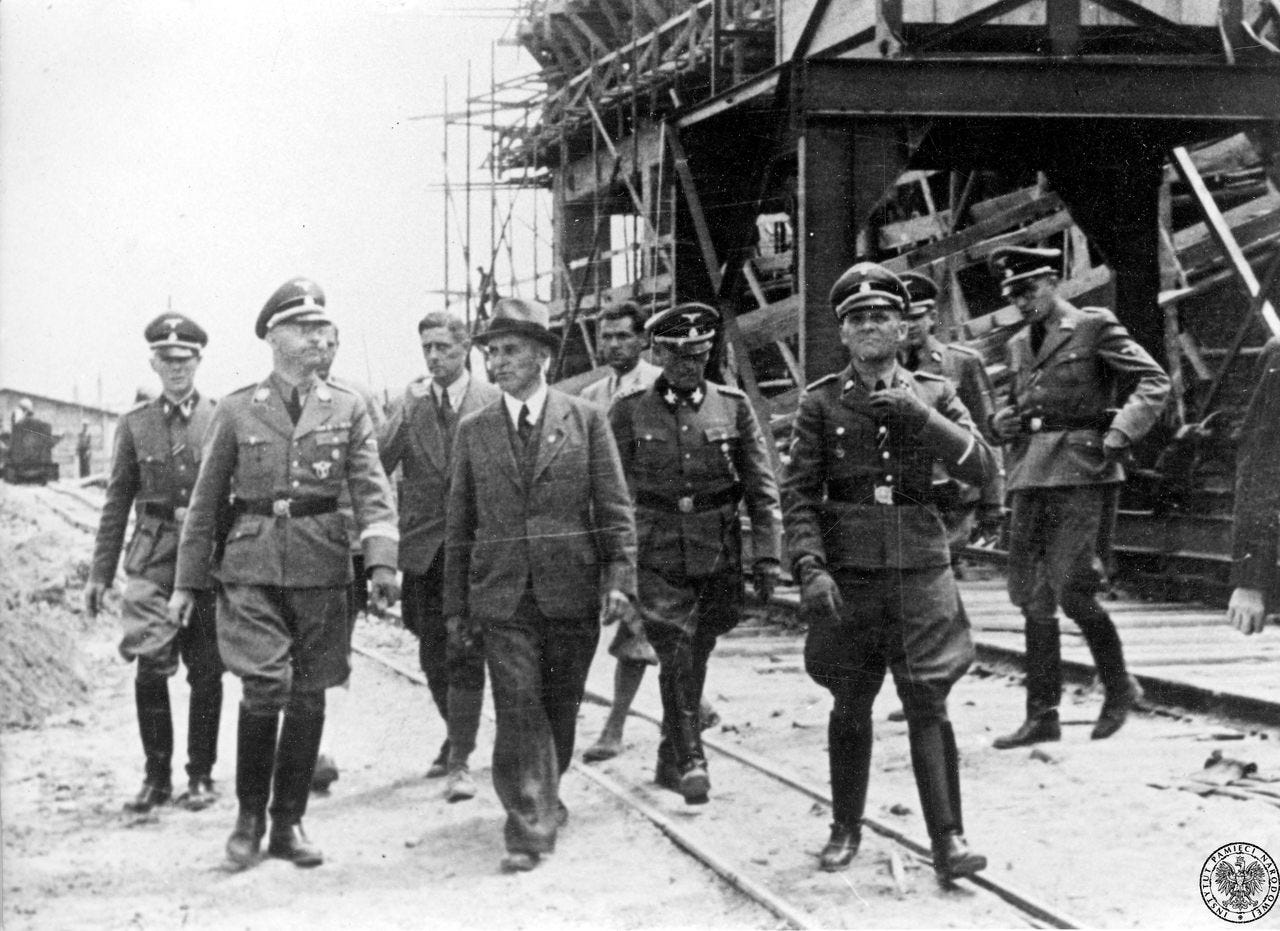Trading Democracy for Profits
How German industry made a deal with Hitler, and what we can learn from it today.
Big business in Germany didn’t just go along with Hitler. It capitulated to him. Companies valued profits over human rights, freedom, and democracy—and they made a fortune.
Crushing Labor
On May 2, 1933, the Nazis destroyed the free labor movement. Independent unions were banned, leaders arrested, and strikes outlawed. In their place, the German Labour Front became a state-run shell that answered only to the party.
Soon after came the “workbook” system. Without a workbook you couldn’t get a job. Employers could hold on to it, which meant workers couldn’t leave for better pay. Labor was frozen in place.
This was exactly what big business wanted: no bargaining, no walkouts, no freedom for workers.
Slave Labor
As Germany rearmed and then went to war, industry was fed a new source of manpower: millions of foreign civilians, prisoners of war, and concentration camp inmates. They were forced into factories under SS guard. Conditions were brutal, often fatal.
For corporations, the profits soared. Labor costs had been pushed almost to zero. Slave labor is cheap.
Companies That Played Along
IG Farben – The chemical giant built a plant right next to Auschwitz to make synthetic rubber. It used thousands of camp prisoners. After the war, IG Farben was broken up into BASF, Bayer, and Hoechst. At Nuremberg, a handful of executives were convicted, but sentences were short. The successor firms became global players.
Krupp – The steel and arms empire supplied Hitler’s military and relied heavily on forced labor. Owner Alfried Krupp was convicted, then released in 1951. He soon regained control of his fortune. Today, the company is part of ThyssenKrupp.
Volkswagen – Created under the Nazi “Strength Through Joy” program, its wartime production used forced labor, including camp inmates. Decades later, the company admitted its history and set up a compensation fund.
Siemens – A major user of forced labor, Siemens also later joined compensation funds and opened its records.
Deutsche Bank – Financed Nazi projects and profited from the seizure of Jewish businesses. It survived the war and later published studies on its own role.
Allianz – The insurance giant worked closely with the Nazi state. Like others, it still thrives today.
After the War
Some executives went on trial. A few served time. But the system that allowed industry to trade democracy for profits remained intact. By the early 1950s, many corporate leaders were back in their old jobs. The firms flourished in West Germany’s postwar boom.
Decades later, lawsuits and public pressure forced these companies to acknowledge their history. Some paid into funds for surviving forced laborers, sponsored memorials, or opened archives. But by then, they had already become household names around the world.
The Lesson
The story is not just about Nazi Germany. It’s about what happens when industry decides that profit matters more than people, more than freedom, more than democracy itself.
The bargain was simple: Hitler guaranteed labor peace, crushed dissent, and delivered captive workers. In return, business leaders gave him their support. Bending the knee made them a lot of money, but their bank vaults were lined with blood.



